Succah by the Sea
Six succahs have been unveiled in Sydney’s Marks Park as part of the annual Sculpture by the Sea exhibition.
OBSERVING the succah designed by Other Architects, it’s difficult to see how, upon first glance, it adheres to the halachic stipulations required for a succah.
Within an inner four-walled space, there is no overhanging canopy.
Surely without schach, this can be no succah.
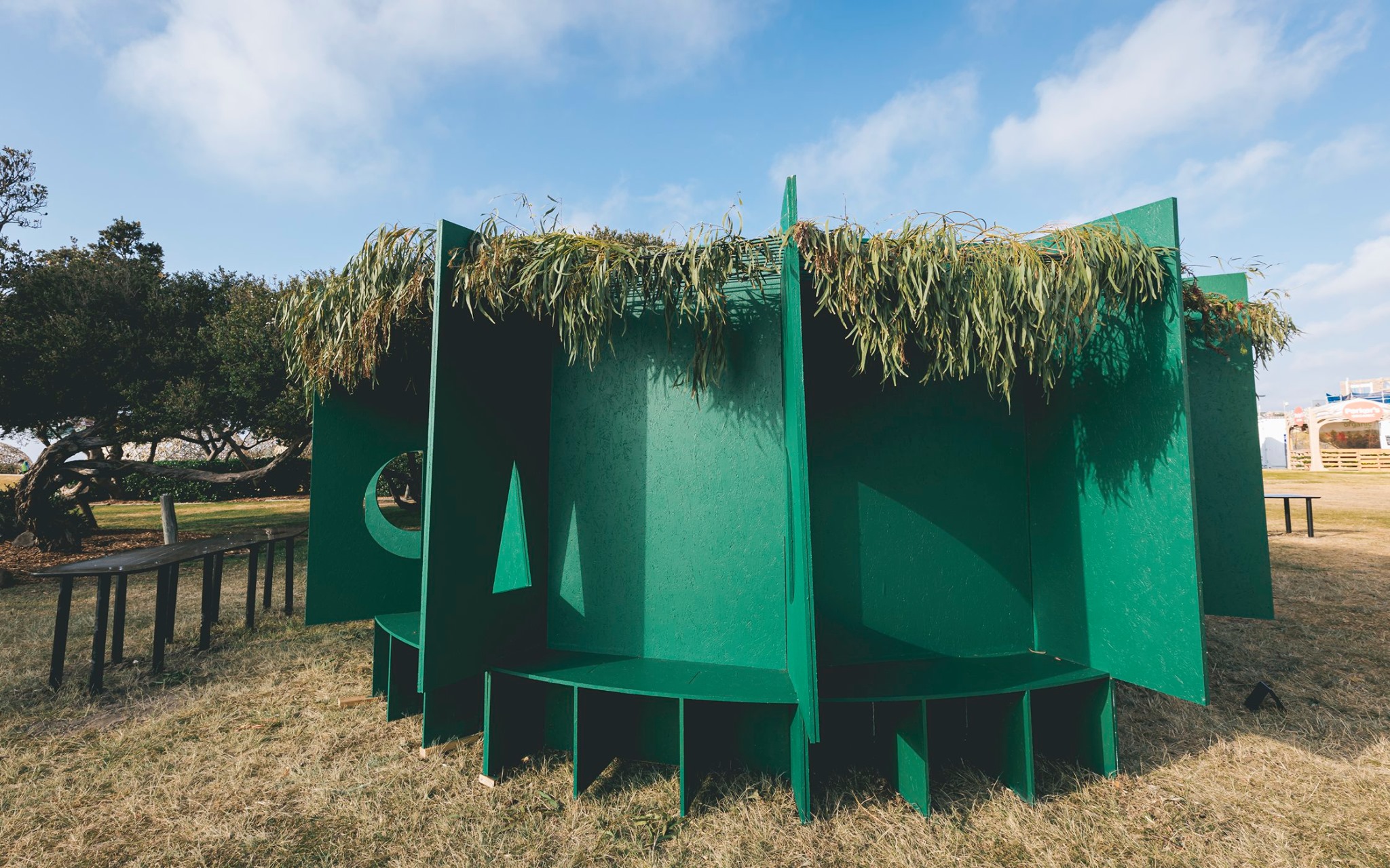 But in keeping with Other Architects’ philosophy to subvert the expected, co-directors David Neustein and Grace Mortlock play by the rules while bending them, and have turned traditional representations of a succah on their head in a clever and cutting-edge fashion.
But in keeping with Other Architects’ philosophy to subvert the expected, co-directors David Neustein and Grace Mortlock play by the rules while bending them, and have turned traditional representations of a succah on their head in a clever and cutting-edge fashion.
Surrounding the square-shaped interior are 11 bays circling in a ring, each comprised of three walls with schach.
Able to accommodate two or three people in each bay, and meeting the minimum dimensions of a succah, the booths have been constructed according to halachah.

Sophie Deutsch
“We call it Inside-Out Succah because instead of people focusing inwards and having a very internal experience, they are sitting and looking outwards. They are aware of the world around them and they are in conversation with other people as they go past,” remarked Neustein.
Together the 11 mini succahs form a community hub and surround the central zone, which Neustein describes as a “kind of rhetorical space where the succah would be, where you would be sitting with your table and chairs with your family having a meal”.
He and Mortlock are the only Jewish team engaged in Succah by the Sea – a collaboration between Shalom and Sculptures by the Sea – that runs from today until November 10.
Mortlock added, “You can sit on these little individual succahs and talk with someone though these talking holes between them, but you can also look out to the world so it connects you to all of Sculptures by the Sea as well as Succah by the Sea.”
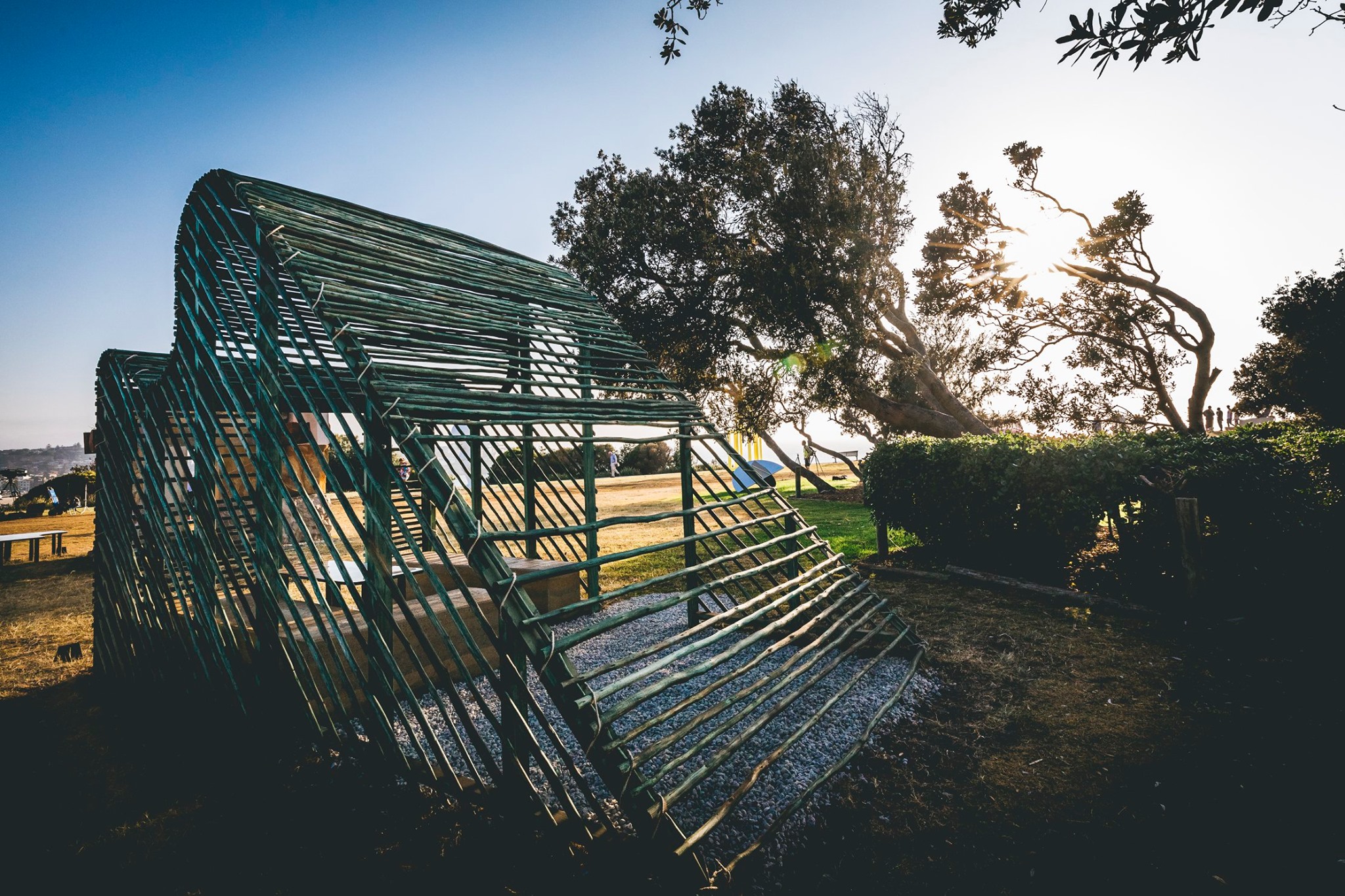 Though Inside-Out Succah subverts the expected, the architects give a nod or two to tradition.
Though Inside-Out Succah subverts the expected, the architects give a nod or two to tradition.
Adhering to the requirements of a succah, they also pay homage to some exquisite historical forms that were once commonplace for a succah design.
“There are these unbelievably beautiful 19th century succahs that are preserved in the Israel Museum in Jerusalem and the Museum of Jewish Art and History in Paris that are both from Southern Germany, and they each have this very nondescript crude timber exterior and this incredibly beautifully painted trompe-l’oeil interior of a panoramic cityscape,” remarked Neustein.
On the exterior, a plain and intentionally uninspiring material occupies the space. Inside, the bland structure makes way for a rich and intricate design. There’s a very pragmatic reason for such a design.
“You can imagine the people who had this succah living in a town where Jews weren’t necessarily encouraged to express themselves freely,” said Neustein.
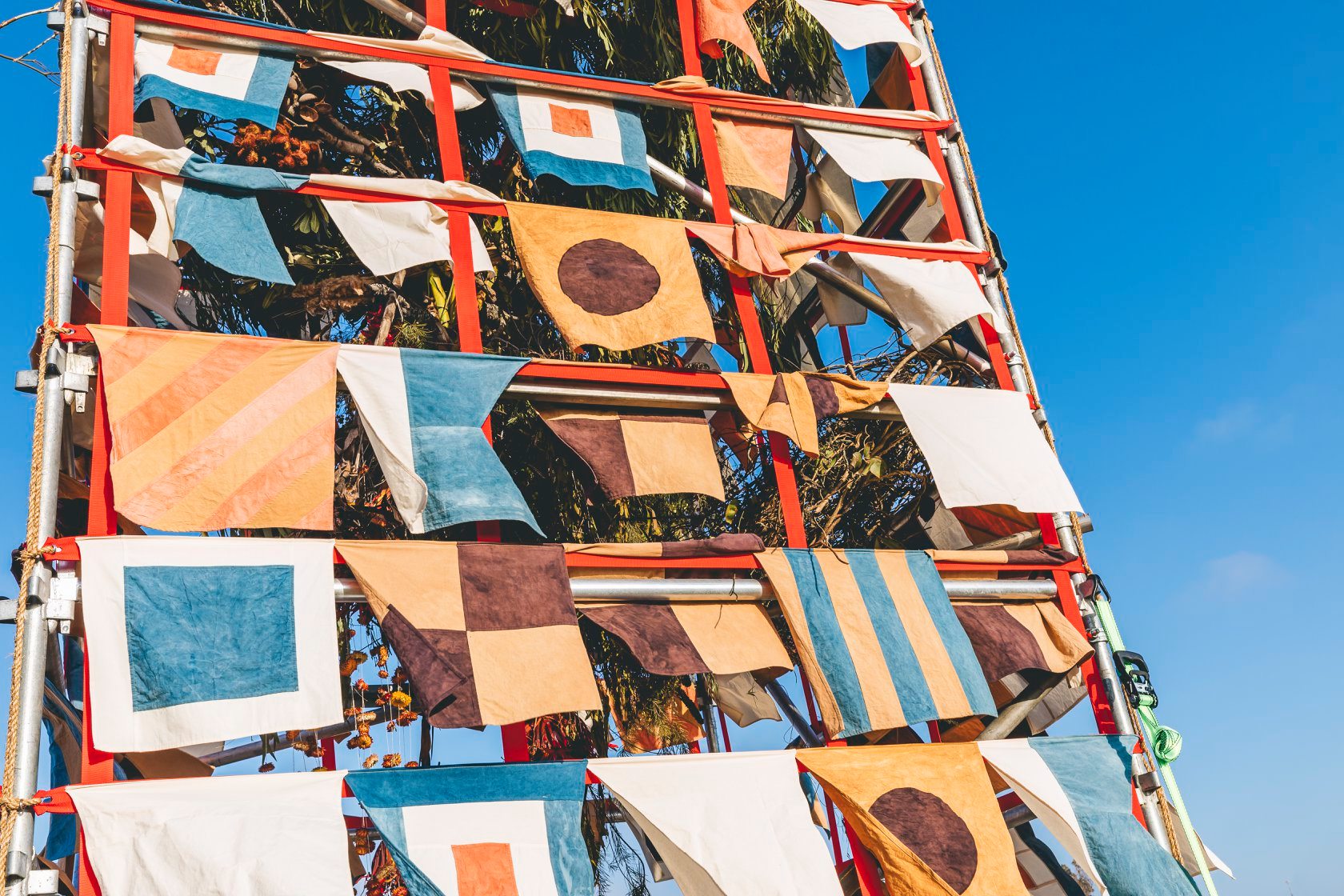 Seeking inspiration from these 19th century succah styles, as well as the ubiquitous blue tarpaulin often used for Australian succahs, Other Architects collaborated with artist Izabela Pluta, who has created exquisitely designed interior walls.
Seeking inspiration from these 19th century succah styles, as well as the ubiquitous blue tarpaulin often used for Australian succahs, Other Architects collaborated with artist Izabela Pluta, who has created exquisitely designed interior walls.
“Izabela made a reproduction of the tarpaulin so it’s actually tarpaulin that has been photographed, printed onto fabric and manipulated so that it looks like it’s moving in the breeze and has all this depth in it.
“Then it’s reprinted onto another lining that is translucent so as you get up close you realise that you can see through it and also that the movement of the breeze is actually an illusion,” said Neustein.
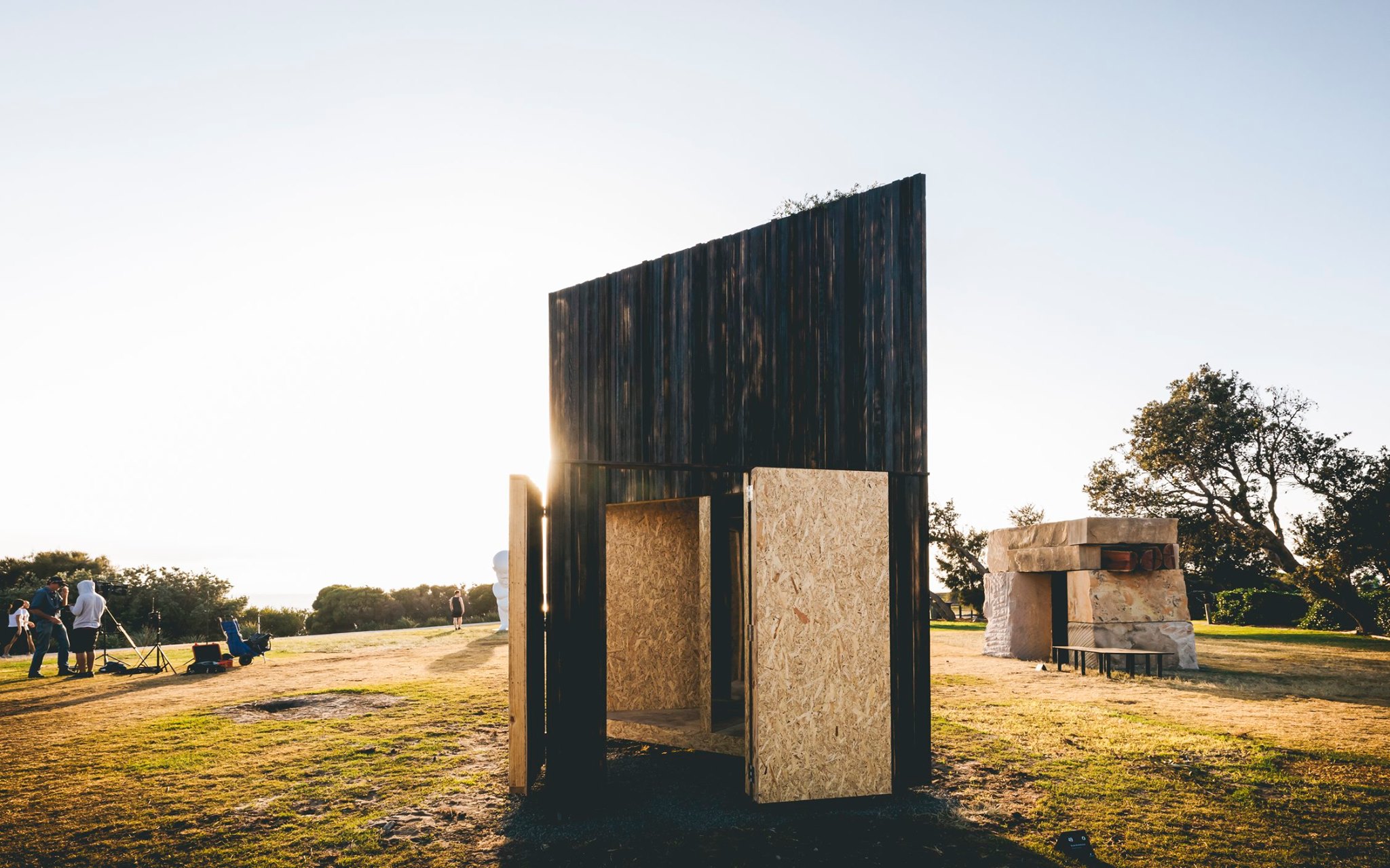 While some may think parameters inhibit free design, Other Architects is of a different view.
While some may think parameters inhibit free design, Other Architects is of a different view.
“Often people think that having a blank slate is better and no constraints but really we think that architecture flourishes when there are rules you need to adhere by and then you can innovate around those rules,” said Mortlock.
In their own distinctive way, each architectural firm involved in Succah by the Sea has needed to embrace this philosophy.
Close to Inside-Out Succah is Monolitus Domum by Scale Architecture – a succah exploring the intersection between domestic life and public art with a kaleidoscopic view of the botanical roof, as well as Supersuccah by Supermanoeuvre.
“They are the digital innovators,” explained director of Office Feuerman, William Feuerman, who is the creative director of Succah by the Sea, and selected each firm for their willingness to push the boundaries of traditional architecture.
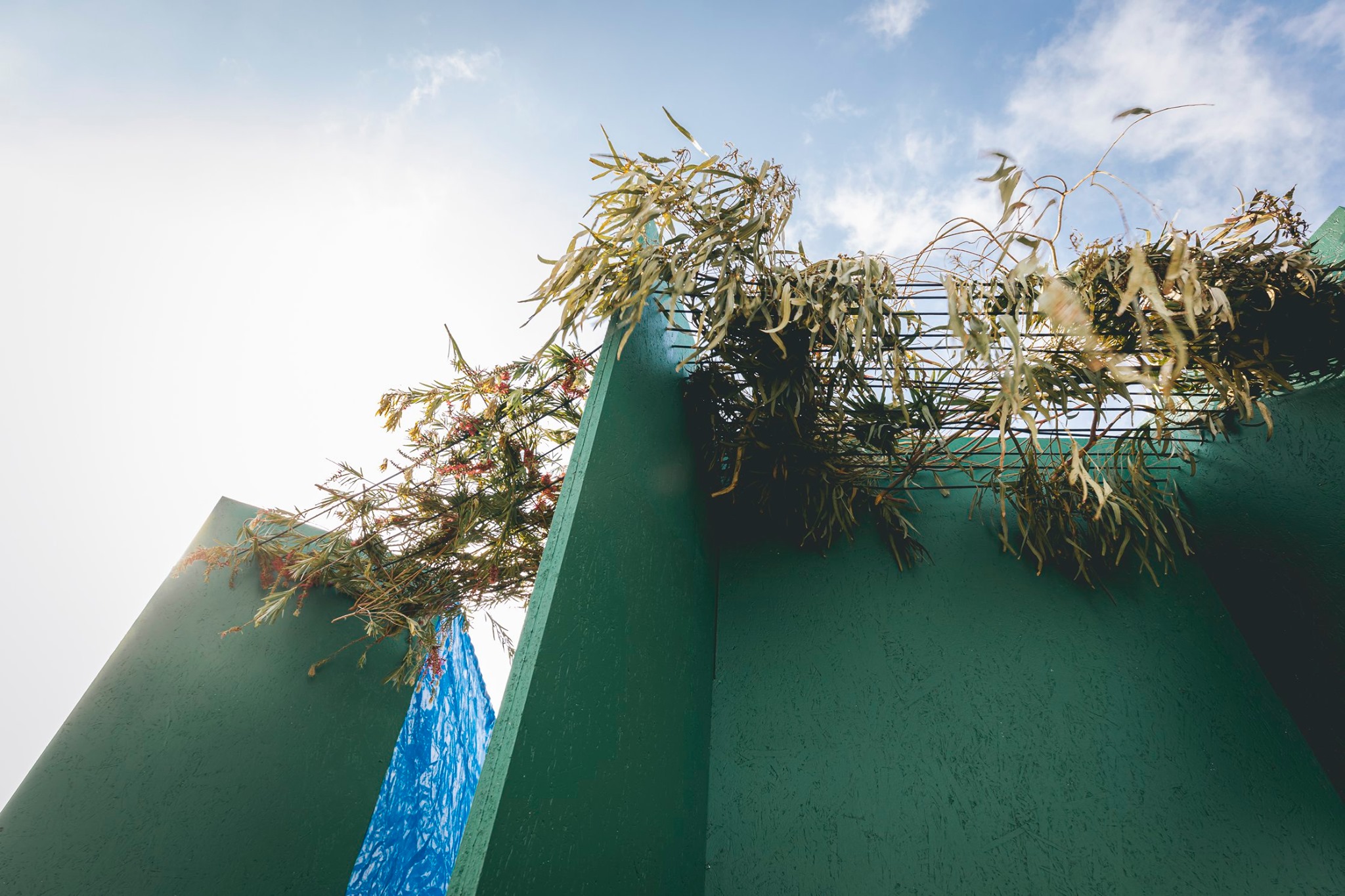 “Supermanoeuvre’s project is looking at creating a succah using zero wastage – basically using strips of timber, that when separated are flimsy and non-structural but when they attach and are woven together, they are almost like a basket and become structural.”
“Supermanoeuvre’s project is looking at creating a succah using zero wastage – basically using strips of timber, that when separated are flimsy and non-structural but when they attach and are woven together, they are almost like a basket and become structural.”
Made of natural dyes from the local vegetation, Dune is designed to disappear into the landscape. At the very least, with its form resembling a wave or organic form moulded by the wind, Dune blends in, while urging viewers to contemplate how we can address the impending threat of climate change.
Exploring ideas around fragility and permanence, Raffaello Rosselli transforms ordinary materials into an extraordinary creation by ‘upcycling’ sandstone, while Urtzi Grau and Guillermo Fernandez Abascal’s A Portable Territory will relocate itself during Succah by the Sea, speaking to the precariousness of shelter and our attempts to retain familiarity in a fragile world.
Visit www.succahbythesea.com.au.
Get The AJN Newsletter by email and never miss our top stories Free Sign Up

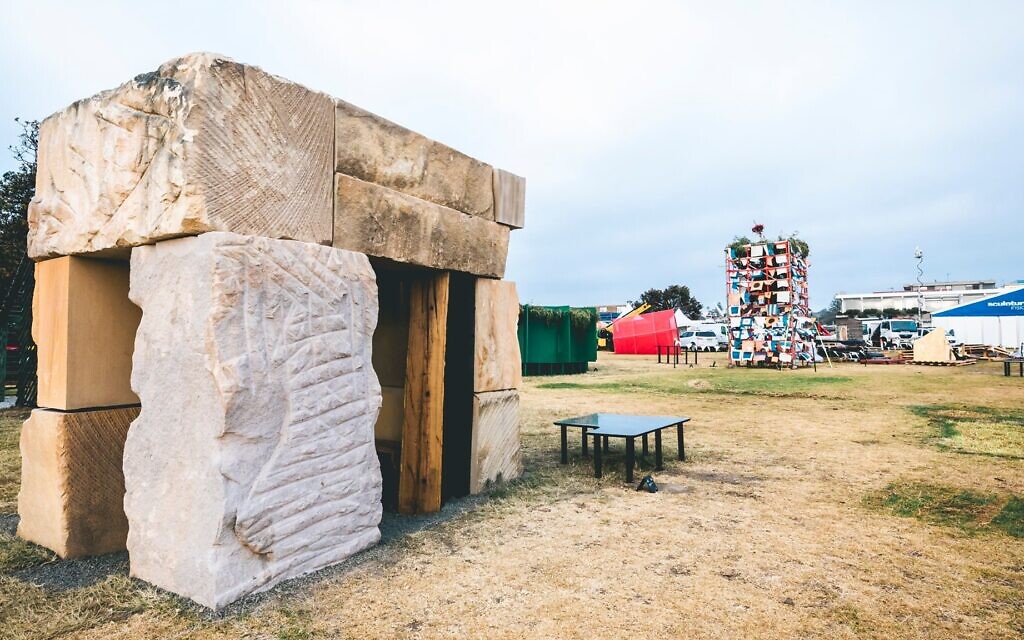
comments